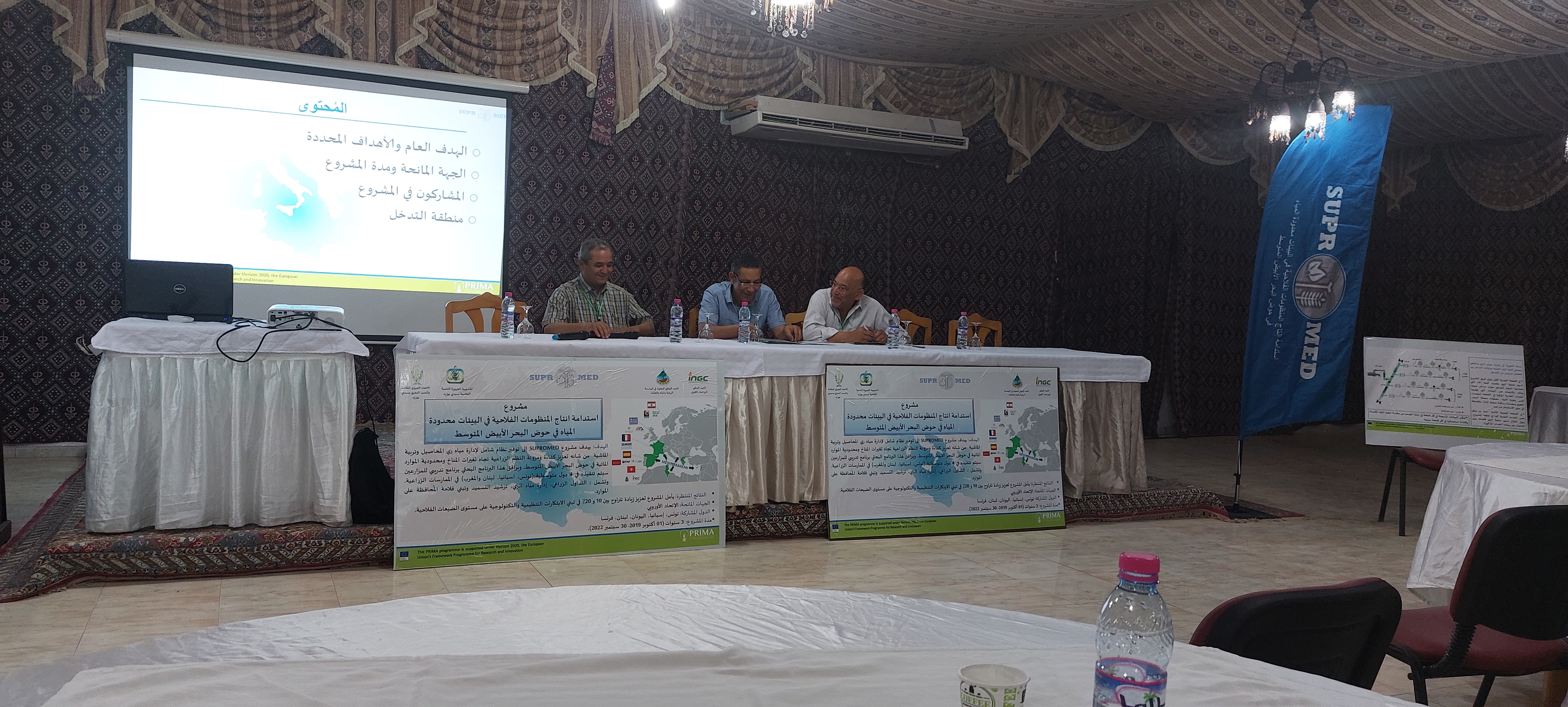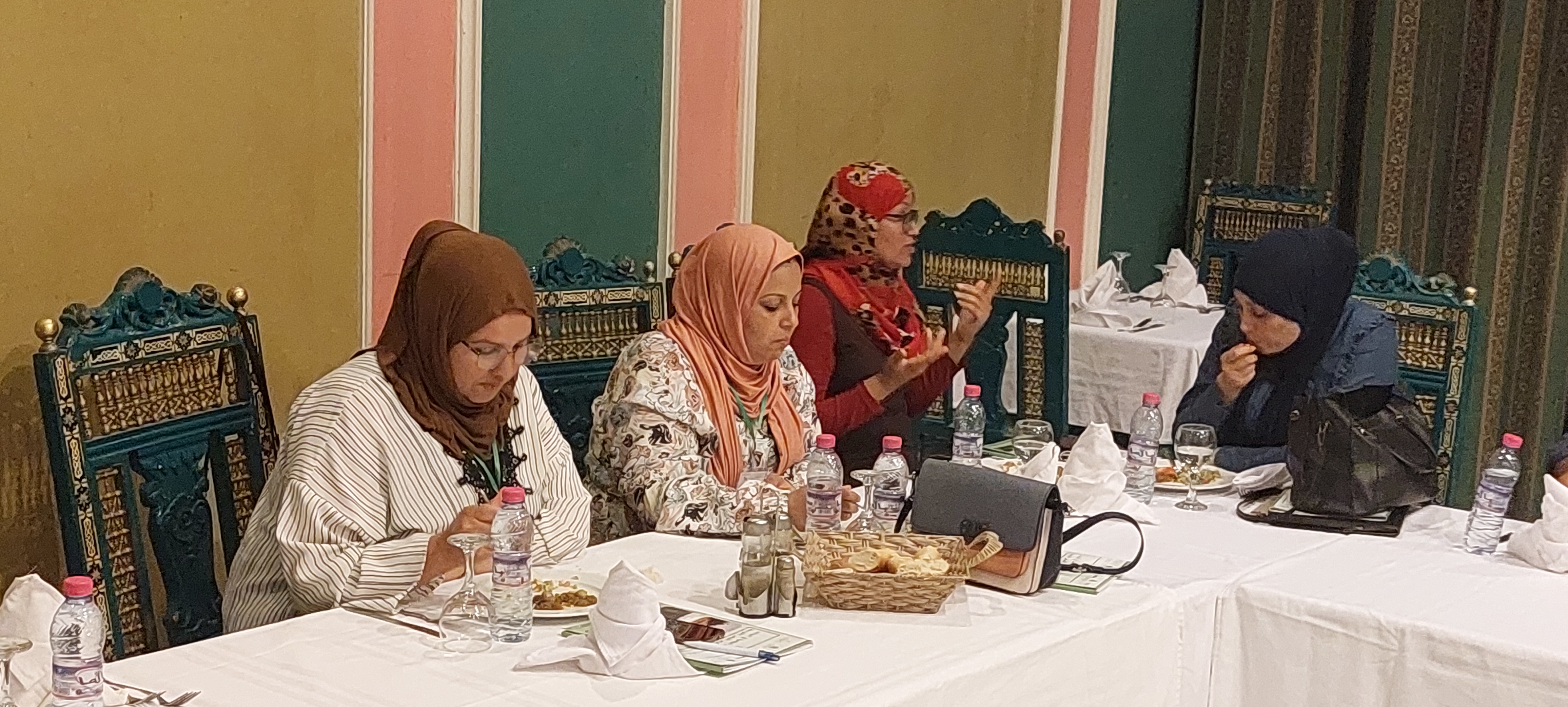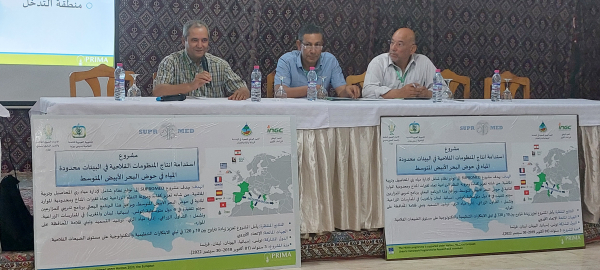Workshop on "Adopting Smart technologies for irrigation scheduling in water limited areas" held in the framework of SUPROMED 6-7 June in Gafsa, Tunisia
43 participants attended the workshop held in Gafsa Tunisia on 6-7 June 2022. The participants were farmers, engineers, researchers and policymakers.
Interesting discussions took place on the following topics :
- Management of common resources under the open-access regime.
- The state of groundwater in the regions of Sidi bouzid , Gafsa, and Kasserine
- Good agricultural practices in the management of olive trees, almond trees and pistachio trees.
- Presentation of the technological platform of the SUPROMED project.
- Presentation of the MOPECO model with application on a concrete case.
- Presentation of the IREY model with application.
- Testimonies of users farmers
- General discussion on the usefulness of irrigation scheduling tools based on local weather data and rainfall forecasts.
- Feedback and attitudes of farmers and technicians regarding the usefulness of the tools and willingness to pay for these services.
Given the critical state of the groundwater, which is largely overexploited in the 3 Governorates (Sidi Bouzid, Gafsa, Kasserine), two major suggestions emerged from the discussions:
- The first is the need (or even the obligation) to introduce fundamental changes in the production systems by gradually reducing the highly water-intensive crops (industrial tomatoes and lettuce, as is the case in Sidi Aïch-Gafsa) in favour of wheat and winter fodder crops for greater integration of livestock. But this change of allocation requires a real involvement of the decision-makers in order to considerably increase the prices of cereals (the depletion of the aquifers is largely due to the unequal ratio of prices, largely to the benefit of market gardening and fruit trees).
- The second is to better disseminate decision support model solutions and to increase the number of plots equipped with humidity sensors and weather stations.


